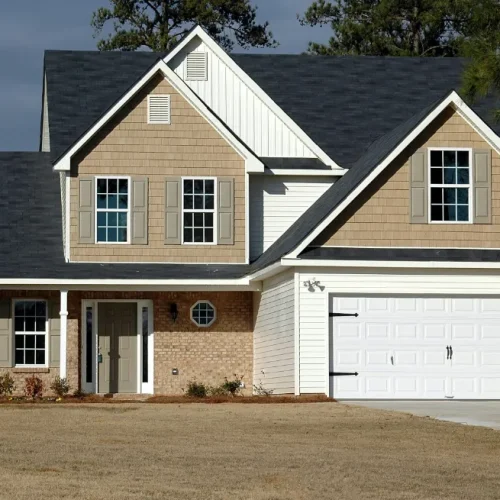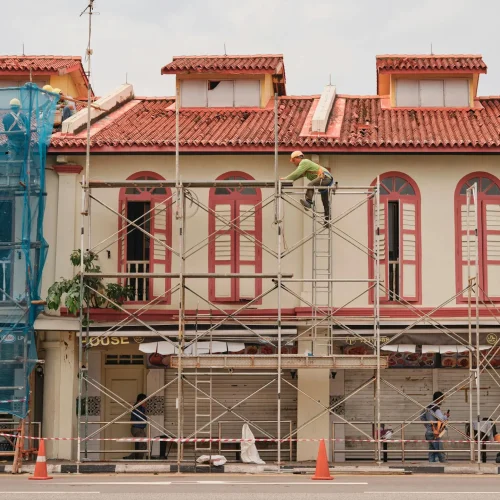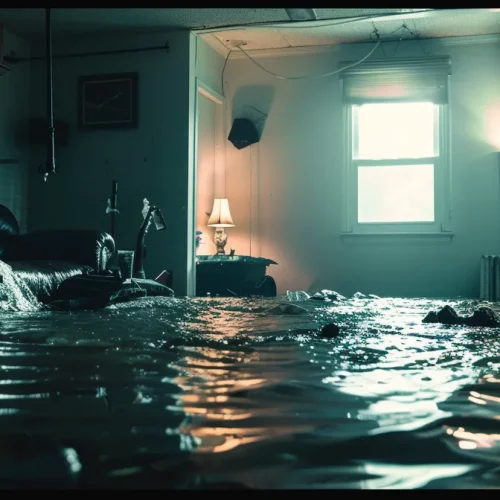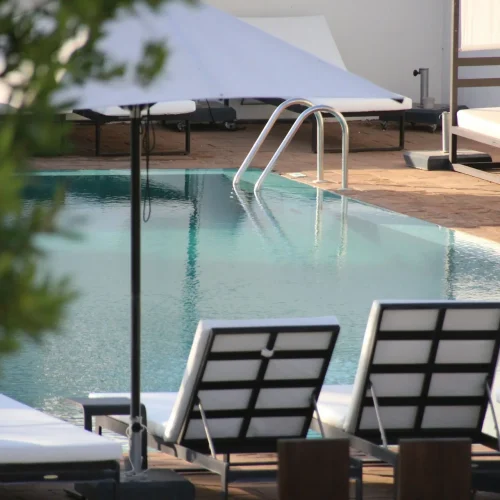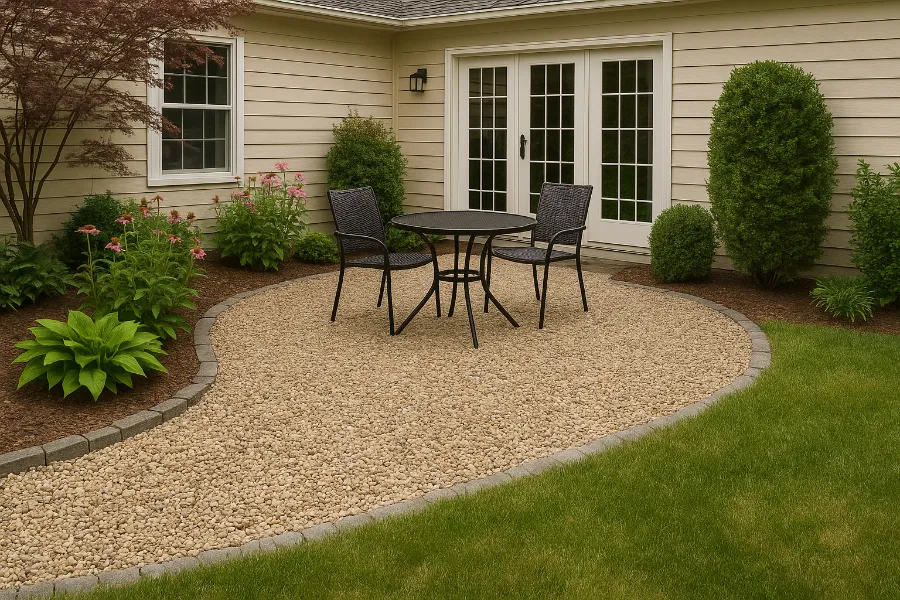
You’re planning a new patio, walkway, or play area and the first question pops up: how much pea gravel do I need? Getting this right saves you time, money, and frustration. Too little and you’ll end up with bare patches. Too much and you’ve paid for rock you can’t use. The good news? With a tape measure, a simple formula, and a few insider tips, you can calculate the perfect amount. Let’s break it down.
Quick Answer & Coverage Formula
The simplest way to calculate how much pea gravel you need is this:
Area (length × width) × Depth = Volume.
From there:
- Convert cubic feet → cubic yards (divide by 27).
- Or convert to tons (using average pea gravel density of ~1.3 tons per cubic yard).
- Or convert to bags (50 lbs per bag, ~0.5 cubic feet).
Pro tip: Always order 5–10% more than the calculation. This covers compaction, settling, and cutting errors around edges.
Measure Your Area
Rectangular & Square Spaces
Grab your tape measure:
- Multiply length × width in feet.
Example: A 10 ft × 20 ft patio = 200 square feet.
Circular Spaces
Use the formula:
- Area = π × radius².
Example: A circle with a 5 ft radius = 78.5 square feet.
Irregular Shapes
For curved paths or odd layouts:
- Break the space into smaller rectangles, triangles, or circles.
- Add them together.
For even more accuracy, lay a grid over your space on graph paper and count the squares.
Choose the Right Depth
Depth matters more than most people think. Here’s the breakdown:
- Walkways & play areas: 1–2 inches
- Patios & sitting areas: 2–3 inches
- Driveways or dog runs: 2–3 inches (on top of compacted base rock)
Note: For structural uses (driveways), pea gravel should sit on a compacted base. Also, adding geotextile fabric under your gravel helps prevent weeds and sinking.
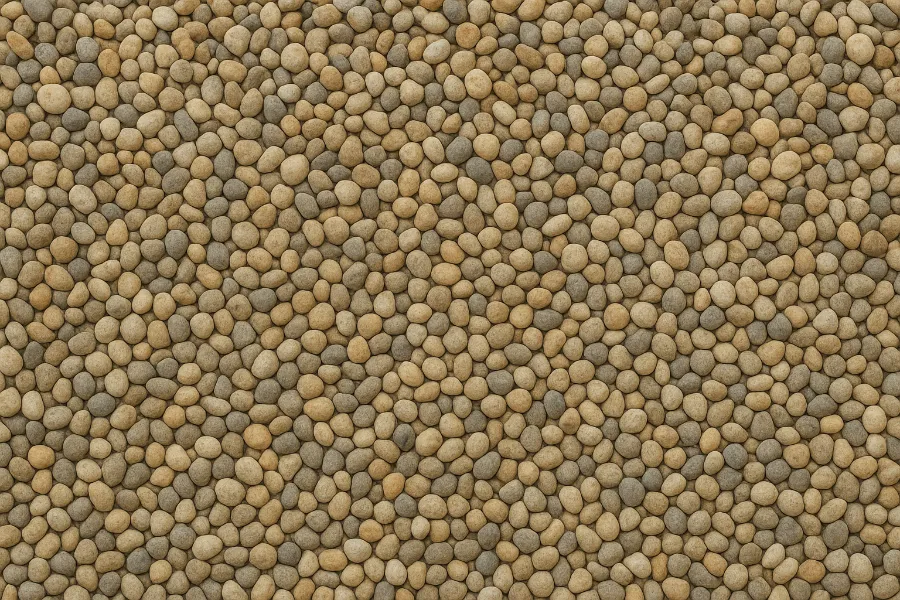
Do the Math (Step-by-Step Mini Calculator)
Let’s run through a real example.
Say you want a 10 ft × 20 ft patio at 2 inches deep.
- Multiply: 10 × 20 = 200 sq ft
- Convert depth: 2 inches ÷ 12 = 0.167 ft
- Volume: 200 × 0.167 = 33.4 cubic feet
- Convert to yards: 33.4 ÷ 27 = 1.24 cubic yards
- Convert to tons: 1.24 × 1.3 ≈ 1.6 tons
- Convert to bags: 33.4 ÷ 0.5 ≈ 67 bags
So, you’d need about 1.5–2 tons or 67 bags. Round up to 2 tons for a safe buffer.
Coverage Tables (Quick Reference)
Square Feet Covered per Cubic Yard
| Depth | Coverage per Cubic Yard |
|---|---|
| 1″ | ~324 sq ft |
| 2″ | ~162 sq ft |
| 3″ | ~108 sq ft |
| 4″ | ~81 sq ft |
Square Feet Covered per Ton
(based on ~1.3 tons per cubic yard)
| Depth | Coverage per Ton |
|---|---|
| 1″ | ~250 sq ft |
| 2″ | ~125 sq ft |
| 3″ | ~83 sq ft |
| 4″ | ~62 sq ft |
These tables let you quickly check how much pea gravel you need for any project size.
Cost Planning
Pea gravel is budget-friendly, but prices vary. Here’s what to expect:
- Per ton: $30–$55
- Per cubic yard: $40–$60
- Per 50-lb bag: $4–$6
Delivery fees: Most suppliers have a 1–2 ton minimum plus a delivery charge ($50–$150). For small projects, buying bags at a home improvement store may be cheaper.
Factor in tools: wheelbarrow, rake, tamper, or a rented plate compactor if you’re installing on a base.
Ordering Tips & Logistics
- Round up your order. It’s easier to spread a little extra than to run short mid-project.
- Plan your drop zone. Gravel is heavy—make sure the truck can access your driveway or yard.
- Have tools ready. You’ll want shovels, a wheelbarrow, and sturdy gloves.
- Check the weather. Rain plus fresh gravel equals a muddy mess.
- Prep the site. Edging keeps gravel in place, and weed barrier fabric saves headaches later.
Common Mistakes to Avoid
- Skipping edging. Gravel will scatter without a border.
- Ordering too little. Always round up by 5–10%.
- Wrong depth. Too shallow = bare patches. Too deep = a wobbly surface.
- Forgetting drainage. Flat surfaces with no slope can trap water under the gravel.
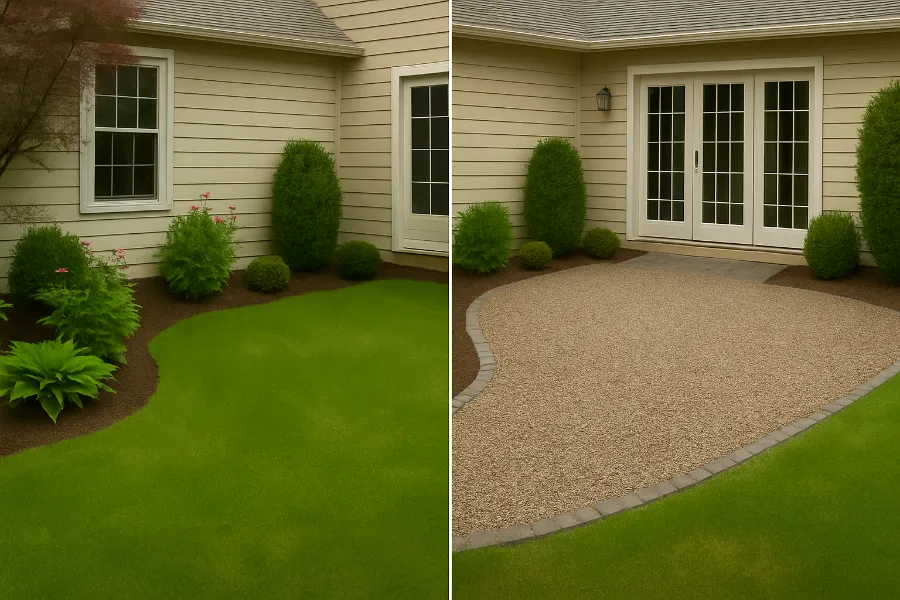
FAQs
How much pea gravel do I need for a 10×20 area at 2 inches?
About 1.5–2 tons or 67 bags.
What’s the difference between a yard and a ton?
A cubic yard is volume (3×3×3 feet). A ton measures weight. One yard of pea gravel weighs ~1.3 tons.
Do I still need weed barrier?
Yes, unless you love pulling weeds. It doesn’t reduce gravel depth needed, but it helps keep your project clean.
Can I use pea gravel on a slope?
Only if you install edging or stabilizing grids. Otherwise, it will migrate downhill.
Will I need to top up over time?
Yes—especially in high-traffic areas. Plan to refresh every 2–3 years.
Final Thoughts
If you came here wondering how much pea gravel do I need, now you’ve got the tools to calculate it confidently. Remember the formula: Area × Depth = Volume. Convert to cubic yards or tons, round up a little, and you’re set. Whether it’s a cozy patio, a safe play area, or a neat driveway, the right amount of pea gravel makes the job smooth, clean, and long-lasting.


